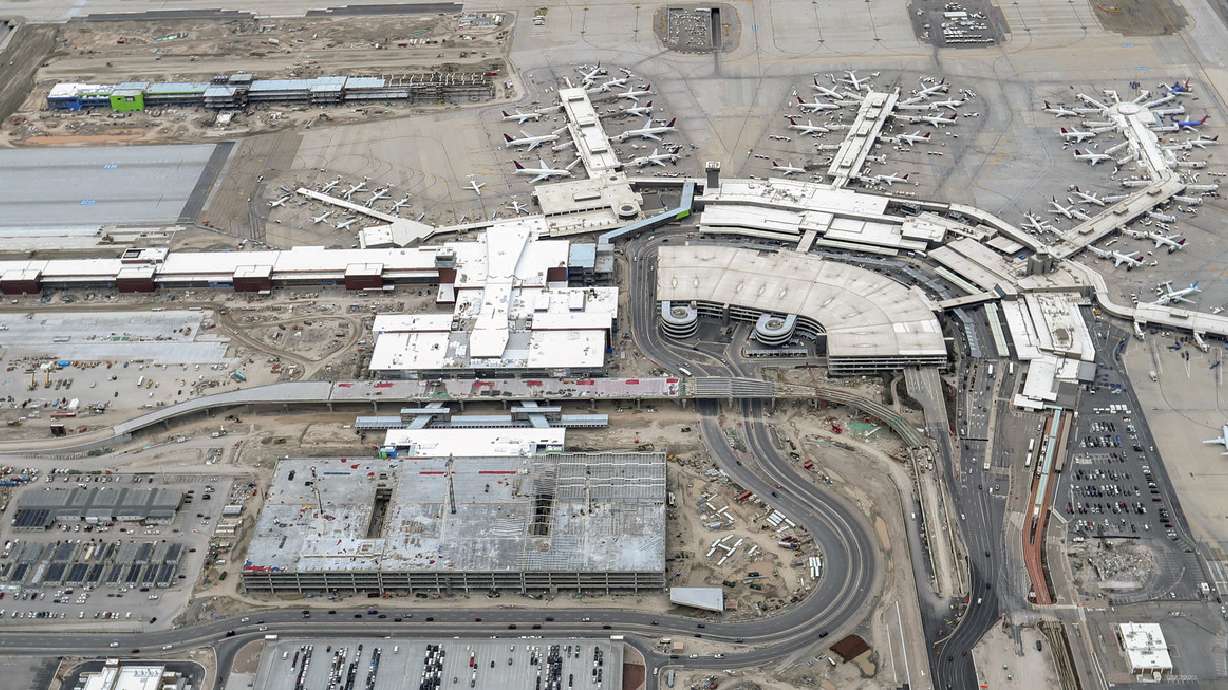Estimated read time: 3-4 minutes
This archived news story is available only for your personal, non-commercial use. Information in the story may be outdated or superseded by additional information. Reading or replaying the story in its archived form does not constitute a republication of the story.
SALT LAKE CITY — The first phase of the new Salt Lake City International Airport is just about a year away from completion, but the city is already looking ahead to the next two decades and beyond.
The Salt Lake City Department of Airports held its first in a series of public meetings on Wednesday night to update the public on the progress of the airport construction and the first findings of research into what the next 20 years might hold.
The first phase of the new airport, which will include a new gateway center, a 3,600-car parking garage, terminal, and north and south west concourses, is on track to open Sept. 15, 2020. The second phase, which will complete the rest of the concourses and demolish the existing buildings, will wrap up sometime in 2024 or 2025.
"The question is, what happens after this new facility is built?" asked Steven Domino, senior northwest mountain region aviation planner with the airport consulting firm RS&H. "The community is going to continue to grow … and as the community grows, the airport needs to be able to respond to the demand that’s created within the community."
The airport currently serves about 26 million passengers each year, making it the 23rd busiest airport in North America — a ranking it's achieved largely because of its position as a hub for Delta Airlines. It was originally built to accommodate about 10 million annual passengers, according to city officials.
"If you’ve flown out of the existing airport, I think you have a visceral feel for" why the city needs a new airport, said Bill Wyatt, executive director of the Salt Lake City Department of Airports. The updated airport will include more restrooms, more concessions options — featuring local restaurants and vendors — and expanded, streamlined parking.
Between the local concessions options and art and paint color schemes intended to evoke Utah landscapes, "you’re going to have a sense of Utah in the new facility," Wyatt said. Sixty-seven percent of contractors hired for the project are based in the Wasatch Front.
The new airport will also address some of the seismic safety concerns related to the Wasatch Fault. The entire project will cost in the neighborhood of $3.5 billion to $4 billion.
Now, with construction well underway, the city has begun to look ahead to what the next 20 years might bring.
Research for a new master plan currently in the works projects that the Salt Lake International Airport will see between 32.8 million and 43.6 million passengers per year by 2037. That's an estimate, Domino emphasized.
"We don’t know what the economics are going to be in the next 20 years," Domino said. "We can make our best guess, but we know we’re not going to be right on."
While the new master plan projects growth over the next 20 years, updates will be made according to the actual growth, not a strict year-based timeline, Domino said.
The new airport currently under construction will be designed in a way that will allow for future construction with minimal disruption to airport operations, Wyatt said.
"We want to be able to accommodate growth," Wyatt said, noting that it "can be expanded almost infinitely without significant passenger inconvenience."
The next public meeting will take place in the late fall or early winter.










